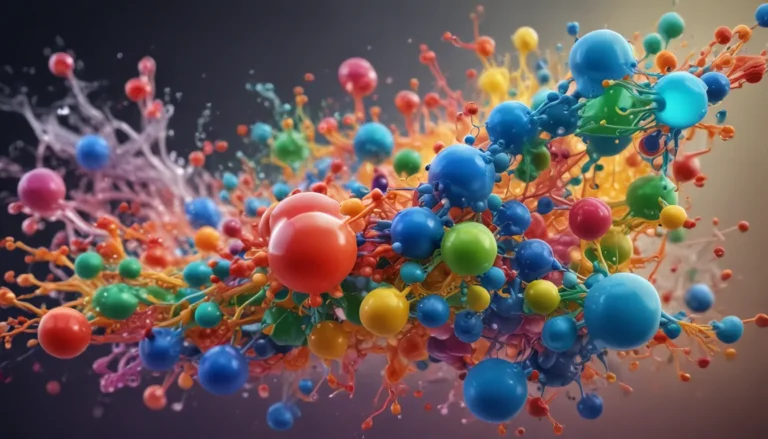A Note About Images: The images used in our articles are for illustration purposes only and may not exactly match the content. They are meant to engage readers, but the text should be relied upon for accurate information.
Soap, a fundamental part of our daily routines, plays a crucial role beyond just cleansing. It has a rich history, from ancient origins to modern-day applications, that often goes unnoticed. In this article, we will delve into 12 surprising facts about soap that will not only spark your curiosity but also deepen your appreciation for this common household item.
Key Takeaways:
- Soap has a history dating back thousands of years and is created through a chemical process known as saponification.
- Soap works by breaking down oils and dirt, making it effective against viruses like COVID-19.
- Soap comes in various forms, with regular soap being just as effective as antibacterial soap.
- Soap is pH balanced, can be crafted from natural ingredients, and has a range of uses beyond cleaning.
Delving Deeper into the World of Soap:
Soap’s Ancient Origins:
Soap-making traces back to ancient civilizations, with evidence found in ancient Mesopotamia around 2800 BC. This early practice laid the foundation for the soap we use today.
The Chemistry Behind Soap:
Soap is a product of saponification, a chemical reaction where fats or oils combine with an alkali to create soap molecules. This unique process forms the basis of soap’s effectiveness in cleansing.
How Soap Works:
The molecular structure of soap enables it to bind with both water and oil molecules, allowing it to lift dirt, oil, and bacteria from surfaces and wash them away effectively.
Effectiveness Against Viruses:
Soap is a potent weapon against viruses, including COVID-19. By disrupting the protective layer of viruses like coronaviruses, soap renders them incapable of infecting us, emphasizing its importance in hygiene.
Diverse Forms of Soap:
From traditional bar soaps to liquid and foaming hand washes, soap comes in various forms to cater to individual preferences and needs, offering a versatile range of choices.
The Myth of Antibacterial Soap:
Contrary to popular belief, regular soap is just as effective at removing bacteria as antibacterial soap. Proper handwashing techniques and thorough scrubbing are key factors in germ removal.
The pH Balance of Soap:
Most soaps are designed with a slightly alkaline pH, around 9-10, to maintain the natural pH balance of our skin, highlighting the importance of skin-friendly formulations.
Crafting Soap from Natural Ingredients:
Artisanal and homemade soaps often utilize natural oils, essential oils, and herbs in their formulations, offering additional benefits and delightful fragrances for users.
Safety Precautions:
While generally safe for external use, soap can be harmful if ingested, leading to gastrointestinal distress due to its chemical composition. It is important to use soap as intended for external cleansing only.
The Art and Science of Soap-Making:
Soap production involves precise measurements and chemical reactions, blending science with artistry. Soap-makers have the creative freedom to experiment with colors, scents, and textures, making it a unique and personalized experience.
Beyond Cleansing: Versatile Uses of Soap:
Soap extends its utility beyond personal hygiene, serving purposes such as stain removal, lubrication, pest control, and even artistic expression, showcasing its multifaceted nature.
Embracing Eco-Friendly Options:
With the growing demand for sustainable products, many companies offer biodegradable and eco-friendly soap alternatives that are gentle on both the skin and the environment, promoting responsible consumption.
Connecting with Soap’s Rich Heritage:
As we uncover these 12 surprising facts about soap, we unveil the intricate science and history behind this everyday essential. From ancient origins to modern innovations, soap continues to hold a pivotal role in our lives, transcending mere cleanliness to symbolize a blend of chemistry and functionality.
A Dip into Soap-Related FAQs:
- Soap Composition: Soap is typically made by combining fats or oils with an alkali in a chemical reaction known as saponification.
- Cleaning Action: Soap molecules have a dual-action mechanism, attracting water molecules while repelling dirt and germs, allowing for effective cleansing.
- Bacterial and Viral Removal: Soap aids in removing bacteria and viruses by breaking down their protective lipid layers, but combining proper handwashing techniques enhances effectiveness.
- Soap Varieties: Not all soaps are the same; they vary in composition and properties based on their intended use, such as antibacterial or moisturizing formulations.
- Environmental Impact: Certain soap ingredients can have an environmental impact, but eco-friendly and biodegradable options are available to minimize ecological harm.
Embracing Soap’s Legacy:
Soap’s captivating history, scientific underpinnings, and versatility make it an indispensable item in every household. Proper hygiene practices, including the use of quality oral hygiene products, can contribute to overall well-being and freshness. By exploring soap’s origins and manufacturing techniques, we gain a deeper appreciation for the art and science behind soap production.
Conclusion:
In conclusion, soap transcends its humble origins to become a fascinating substance with myriad benefits. Its ancient legacy and modern adaptations showcase the evolution of soap-making into an essential aspect of our daily routines, extending its reach beyond mere cleanliness.
Trust in the credibility and authenticity of the facts presented here, as each piece of information is meticulously reviewed for accuracy and relevance. Explore the world of soap with newfound curiosity and appreciation, recognizing its pivotal role in our lives as both a cleansing agent and a symbol of scientific ingenuity.






